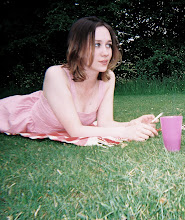Ian Hamilton Finlay: Poet, Artist, Revolutionary
The Gallery of Modern Art, Glasgow
20 June
2013 – 1 March 2014
By CHRISTIANA SPENS
The retrospective of Ian Hamilton Finlay at the Glasgow
Gallery of Modern Art is housed in three rooms on the top floor of the
building, up a winding staircase (or elevator, for those in need) and past a
neon work marking out a presumably imaginary “gentleman’s club”. The space is
limited, but that suits Ian Hamilton Finlay’s work, mainly small screen prints,
and in the third room a sculpture. In the first room, his prints of boats and
related imagery remind visitors of the artist’s Scottish, West Coast roots; the
second room is filled with his more political work, earning him the title and
reputation of a revolutionary, politically as well as artistically.
Part of that innovation was the use of words and concrete
poetry in his artwork, and in his pursuit of a vision combining these media.
Although Hamilton Finlay studied at the Glasgow School of Art in the 1950s, he
became celebrated for his short stories, plays and poetry before his graphic
work. In 1961 he set up the Wild
Hawthorn Press with Jessie McGuffie and within a few years was well-known as a
brilliant and leading concrete poet, in Britain and then internationally. His
visual poetry, and the graphic work he contributed to the publications of the
Wild Hawthorn Press also served as a way into the artwork he is now so well
known for, and which is exhibited in the Glasgow show. From screen prints
paying homage to Scottish fishing boats and landscapes, to prints and concrete
poetry that championed and criticized elements of Neo-Classicism, the French
Revolution, and modern political debate, to installations and sculptures that
fused these ideas with natural materials and environment, Ian Hamilton Finlay
implicitly presented connections between the natural and human society, and
between lessons from the past, and modern dilemmas. Hamilton Finlay managed to
express these ideas with a combination of sutlely (of colour, line, and
concept) with a bold and recognisable style, that was itself influenced by
Neo-Classicism, and the pop art and graphic styles fashionable in the 1950s and
1960s particularly.
The more political screen prints in the second room are
testament to his love of words and pictures; witty and astute slogans and
phrases complete his graphic work about the French Revolution, and bring a
contemporary slant to his references to Classicism and various historical
moments, along with modern symbols and style. In After Bernini (1987), referring to Bernini’s 1625 statue of Daphne
fleeing from the god Apollo, Daphne wears a sash, representing the Republic,
restrained by an Apollo who represents the leadership of the Revolution. And in
Now the Names of the Twelve are Three (1987), Hamilton Finlay combines the names of some of the twelve
apostles with the surnames of key figures from the French Revolution,
emphasising the legendary martyrdom of the revolutionary leaders, and equating
their apparent self-sacrifice with that of the Disciples. In Two
Scythes (1990), Hamilton Finlay presents
the symbols of Communism and death with the Nazi ‘SS’ symbol, apparently
equating the potential fascist manifestations and consequences of Communism
with that of Nazism, simply by merging the symbols of each political movement.
This warning is also emphasised with a print of the French tricolour, with the
words (in English) of “Liberty for some / Equality for some / Fraternity with
some” in each block of blue, white and red, suggesting a disillusionment with
revolution that does not fully deliver its ideals, and which even deceives the
many individuals who suffer for the cause.
The French Revolution was obviously a subject of fascination
for Hamilton Finlay, and that manifested in installations as well as screen
prints and concrete poetry, two of which are now displayed on the top balcony
of the Gallery, reaffirming his familiar theme of liberty emerging at great
cost to individuals and society, and not necessarily the true and full realisation
of that idealistic vision. His other sculptural work tends to focus on his
resurrection and modernisation of neo-classicism, or rather his merging of the
two, as one in the same. Using a variety of materials, such as stone,
constructed objects and neon lighting, he explored the natural environment of
his youth, and the way it could accommodate his own ideals about design and
beauty.
His garden, Little Sparta, is the most famous manifestation
of this vision, reviving the concept of the ‘poet’s garden’, designing the
space of the hillside country-side near Edinburgh to include sundials, columns
and garden temples. It is touching to see that the artist who was apparently so
disillusioned with revolution and politics in the mainstream sense, and the way
that reality did not match the ideals – went on to find that he could realise
his own vision of beauty and harmony in a garden of his own design. If we can
learn anything from Ian Hamilton Finlay’s legacy, it is that Art can realise
visions of harmony and peace, where politics perhaps cannot. The persistence
with the social and political as well as the natural ultimately deepens the
impact of his body of work, and the quiet beauty of his style and idealism. The
Glasgow show, though modest, achieves therefore a well-rounded and perceptive
retrospective of Hamilton Finlay’s art, clarifying with careful attention to
his various interests and media, the connections to be made between his
observance and relationship with society and the natural environment. Though he so often referenced the past,
Hamilon Finlay’s work proves ever more relevant and universal in its ideas and
observations.

No comments:
Post a Comment